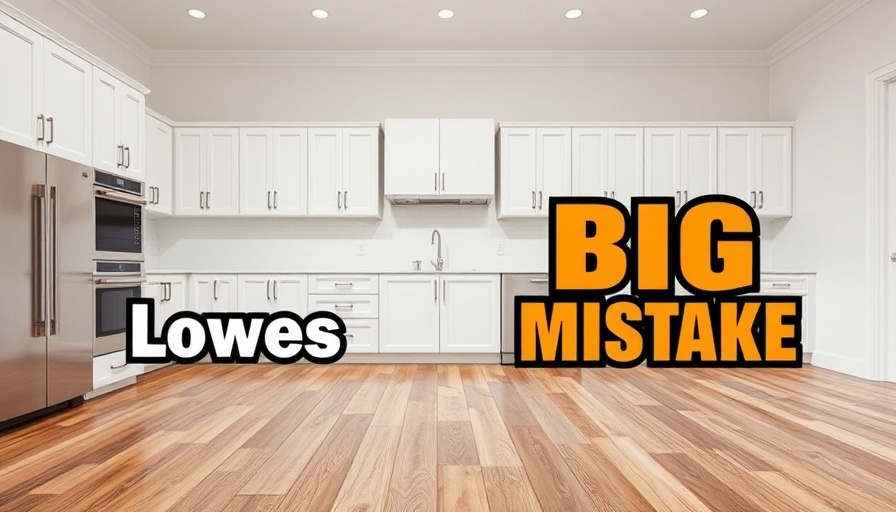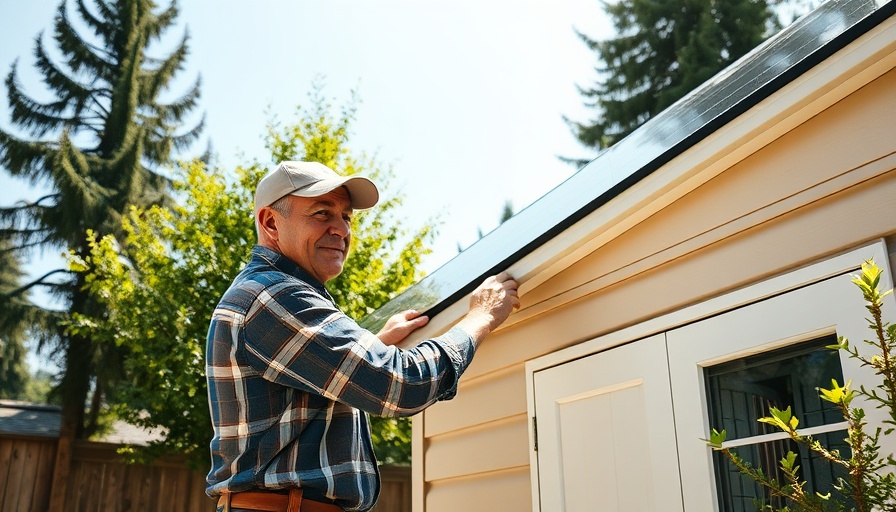
Unlock the Full Potential of Your Smart Home: Essential Repair Tips
Home automation technology has swiftly transformed how we live, making our homes more convenient and efficient. However, even the most advanced smart home systems can encounter hiccups. In the insightful video, "This is EXACTLY how I fix my smart home," several key strategies are unveiled to troubleshoot and remedy common smart home device issues. These invaluable tips are essential for homeowners, especially those aged 40-65, who are navigating the exciting yet complex world of smart technology.
In "This is EXACTLY how I fix my smart home," the discussion dives into effective troubleshooting strategies for smart home devices, exploring key insights that sparked deeper analysis on our end.
1. The Power of the Restart: First Steps in Troubleshooting
Often, the quickest way to fix a malfunctioning device is to power it down and back on. This simple step can rectify a range of issues, from a misbehaving smart light switch to an unresponsive smart hub. One of the best practices mentioned is to physically unplug devices if they are not responding to software commands, as seen with products like HomePods or various smart hubs. This fundamental principle might seem trivial, yet it is usually the go-to solution!
2. The Myth of Battery Life: Understanding Smart Device Signals
When a device claims to have battery life remaining, it can be misleading. As highlighted in the video, sensors might show a reading that does not correlate with their actual functionality. The recommendation to replace the batteries as an initial troubleshooting step is a practical tip many homeowners might forget. A fresh battery can often restore connection and normal operation.
3. Overcoming Connectivity Issues: The Hidden Interference Factors
If you've done all the basics and still face connectivity issues, it may be time to consider your Wi-Fi setup. Poor signal strength can be just as frustrating as faulty devices. Upgrading your router or adding more access points is advisable. Smart devices typically require a robust Wi-Fi link, and optimizing your home network could translate into smoother performance overall. For instance, blocking or managing signal interference is crucial, particularly for devices tucked away in less accessible areas.
4. Leveraging Smart Repeaters: An Overlooked Solution
Oftentimes, homeowners might not think about adding repeaters to boost the strength of their smart home systems. These devices, such as smart outlets or smart light bulbs, can extend the network’s reach, helping eliminate dead zones where connectivity falters. The video underscores that incorporating more Zigbee, Z-Wave, or Thread devices can enhance reliability.
5. Software is Key: Keeping Your Smart Devices Updated
One of the most often overlooked but critical aspects of maintaining a smart home is software updates. Although tedious, software upgrades are essential for ensuring devices function smoothly. As shared, many problems can be resolved by simply updating the app or the operating software, ensuring compatibility and improving performance.
6. Explore Reinstalling Integrations for Renewed Functionality
Smart home systems often rely on various integrations such as those through Amazon or Google. If a device stops responding, logging out and re-logging into the system can occasionally resolve issues that might otherwise require extensive tech support. For those using systems like Home Assistant, reloading integrations can solve problems efficiently, demonstrating that much of smart home maintenance can be quite easy.
7. Insight on User Experience: Learning from Real-Life Errors
The recurrent theme of troubleshooting in smart home applications highlights the importance of adaptability. Homeowners often face these challenges, so sharing experiences and advice proves to be essential. Communities and users exchanging tips not only enhance overall knowledge but reinforce a sense of connection in this tech-driven age.
8. Embracing Automation: The Future of Smart Homes
Lastly, the notion of automation for device recovery is an intriguing area indeed. The ongoing development of self-healing systems for smart homes seems not far-fetched anymore. With the right knowledge and strategies, future households can expect their devices to self-correct, portraying real-time understanding of user interactions.
As we venture into an era heavily focused on technological integration, knowing how to troubleshoot effectively becomes an essential skill. In summary, being proactive with maintenance and understanding your smart home intricacies can save time, frustration, and ultimately enhance your living experience.
If you’re interested in keeping your smart home running optimally, consider revisiting these tips and start exploring how much more your smart devices can do for you.
 Add Row
Add Row  Add
Add 




Write A Comment